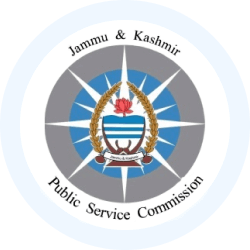Medieval History of Jammu and Kashmir | JKPSC KAS (Jammu and Kashmir): Preparation Course PDF Download
Introduction
The medieval history of Jammu and Kashmir is characterized by the reign of various rulers and dynasties, including Hindu, Muslim, and Mughal rulers. This period was marked by frequent and unpredictable changes. Following the decline of the Karkota dynasty around 855-856 AD, several new dynasties emerged in the state of Jammu and Kashmir.
Utpala Dynasty (855-939 AD)
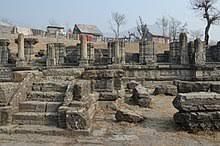
- The dynasty was established by Avantivarman (855-883 AD) in 855 AD. He was a significant ruler who restored peace in Kashmir, which had been plagued by political and economic disorder. According to Kalhana, Avantivarman founded several towns and temples and established a robust administration. His capital city, Avantipura, featured two notable temples, one dedicated to Shiva and the other to Vishnu.
- During Avantivarman's reign, ‘Suya’ was recognized as one of the best engineers in Kashmir and founded Suyyapur (now Sopore in the Baramulla district). After Avantivarman’s death in 883 AD, his son Shankarvarman ascended the throne. This period marked the beginning of the decline of the Utpala dynasty and the onset of civil war within the dynasty.
Brahminic Rule (939-948 AD)
- Following the fall of the Utpala Dynasty, the Brahmins, a prominent Hindu religious community, rose to power. In 939 AD, the Council of Brahmins appointed Yashaskara as the ruler of Kashmir.
- He successfully restored peace and ended the prolonged civil war of the Utpala dynasty. After Yashaskara, Sangramadeva ascended the throne in 948 AD, but his reign was cut short when he was murdered by the minister Parvagupta, leading to the abrupt end of Brahminic rule.
Gupta Rule (948-1003 AD)
- Parvagupta became the ruler of Kashmir in 948 AD but reigned for only two years. Upon his death, his son Kshenagupta (950-958 AD) succeeded him. Kshenagupta married Princess Didda, the daughter of the Lohara King, who was the actual power behind the Gupta Dynasty.
- Didda, who became the ruler in 980 AD after her husband's death, was known for her effective administration and for building numerous temples and monasteries in the state. She ruled the Kashmir valley decisively and, before her death, transferred the throne to Sangram Raj, the Lohara ruler from Poonch and son of her brother Udairaj, in 1003 AD. During Didda's rule, Mahmud Ghaznavi attempted to capture the valley twice but was unsuccessful.
Lohara Dynasty (1003-117 AD)
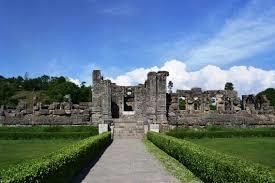
- This dynasty, based in Lohara, was established by Sangram Raj (1003-1028 AD). Notable rulers included Harsha (1089-1101 AD), a patron of art and literature, and his son Bhoja. Both were strong leaders but were treacherously murdered by their generals Uchchala and Sussala, who then took control of the throne.
- Jaisimha (1128-1155 AD) was the last prominent ruler of this dynasty, and during his reign, Kalhana completed his historical text Rajatarangini (1148-1150 AD). Jaisimha ruled effectively for 27 years, bringing stability to Kashmir. The final ruler of the dynasty was Vanitadeva, who died in 1171 AD, leading to political unrest and chaos in the region.
Deva Dynasty (1171-1339 AD)
- This dynasty ruled Kashmir from 1171 to 1371 AD. Sangramdev and Sahdev were notable kings of this period. During Sahdev's reign (1301-1320 AD), Kashmir faced an invasion by Dulucha, a Mongol chief from Central Asia, who committed numerous atrocities in the region. Consequently, Sahdev fled the country.
- Rinchan (1320-1323 AD), a prince from Ladakh, took the throne and became the first Muslim ruler of Kashmir after converting to Islam and adopting the name Sultan Sadruddin. He died in 1323 AD.
- Following Rinchan's death, his queen Kota Rani married Udayanadeva, the Deva ruler and brother of Sahdev. Udayanadeva was the last Hindu ruler of Kashmir. Kota Rani ruled effectively but faced an uprising led by Shah Mir, the minister of Rinchan. This led to the end of the dynasty in 1339 AD and the rise of the Shah Mir dynasty in Kashmir.
Shah Mir Dynasty (1339-1555 AD)
This dynasty was established by Shah Mir, who ruled Kashmir from 1339 to 1342 AD under the title Sultan Shams-ud-din. During his reign, Islam was firmly established in Kashmir. Notable rulers of this dynasty included Sultan Shihab-ud-din (1354-1373 AD) and Sultan Zain-ul-Abidin (1420-1470 AD).
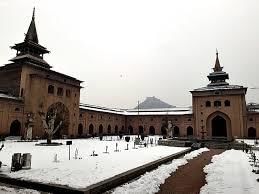
Sultan Shihab-ud-din
- He was a prominent ruler who led numerous campaigns and expanded his territory to regions such as Sindh, Kabul, Ghazni, Kandhar, Pakhali, Swat, Multan, Badakhshan, Dardistan, Gilgit, Balochistan, and Ladakh. He faced an invasion from the ruler of Kashgar, who later claimed Ladakh and Baltistan. During an expedition to Delhi, he also conquered Kangra.
- His expansion efforts were ultimately challenged by Ferozshah Tughlaq along the banks of the Sutlej River. It was later agreed that all territory from Sirhind to Kashmir would be considered part of Kashmir.
- Sultan Shihab-ud-din established a new town named Shihab-ud-din Pora (now Shadipur). His effective administration earned him the comparison to Lalitaditya of Medieval Kashmir.
Sultan Zain-ul-Abidin
- He ruled Kashmir from 1420 to 1470 AD. As a notable Muslim ruler, he reconquered regions including Punjab, Western Tibet, Ladakh, Balti, Kulu, and Ohind (Hazara). He maintained friendly relations with neighboring rulers from Macca, Jilan, Egypt, Gwalior, Sindh, Bengal, Tibet, Gujarat, Malwa, and Delhi. During his reign, Kashmiri historian-poet Jonaraja and his disciple Srivara Pandita composed the Dvitiya Rajatarangini and Jaina or Tritiya Rajatarangini, respectively.
- He established a royal kitchen for Hindu pilgrims at Rainawari, now known as Jogi Lanker (Srinagar). He founded a new city, Nowshaderi, and established the towns of Zainapur, Zainakut, and Zainagir. He also constructed the first wooden bridge in Srinagar, called Zainakadal. Following his death in 1470 AD, the Shah Mir dynasty began to decline with weak successors. The last ruler of the dynasty was Habib-Shah (1555 AD), who was overthrown by his commander, Ghazi Chak, a military general.
Chak Dynasty (1555-1586 AD)
- The Chak Dynasty, founded by Mohammad Ghazi Shah Chak in 1555 AD, was established by a scion of Lankar Chak from the Dard territory in Gilgit-Huza. Ghazi Shah Chak came to Kashmir during the reign of Sahdev. The Chak rulers successfully resisted the attempts of Mughal emperors such as Babur and Humayun to annex Kashmir.
- Yusuf Shah Chak succeeded his father, Ali Shah Chak, and ruled from 1579 to 1586 AD. He was taken to Delhi for negotiations with Akbar but was imprisoned in Bihar, where he later died. Following his death, his son Yaqub Shah Chak ascended to the throne. Yaqub Shah Chak attempted to resist the Mughal forces but was defeated by Qasim Khan's army at Haripura. Consequently, Mughal rule was established in Kashmir in 1587 AD.
Mughal Rule in Jammu and Kashmir
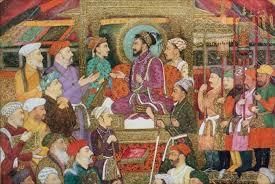
The Mughal Emperor Akbar conquered Kashmir in 1586 AD, establishing Mughal rule in the region, which lasted until 1752 AD.
Key Mughal rulers of Kashmir included:
Akbar
- After gaining control of Kashmir in 1587, Akbar appointed Raja Todermal, his esteemed Finance and Revenue Minister, to implement a revenue settlement for the valley. This early revenue system laid the foundation for the later parbat revenue settlement.
- In 1590 AD, Akbar constructed the Hari Parbat Fort in Srinagar and established a new town nearby named Nagar-Magar. The Mughal emperors highly valued Kashmir for its stunning beauty and exceptional craftsmanship.
Jahangir
- Kashmir fell under Jahangir's rule in 1605 AD, and he visited the region 13 times.
- An art enthusiast, Jahangir commissioned several renowned gardens in Kashmir, including Nishat Bagh and Shalimar Bagh on the banks of Dal Lake, as well as gardens at Achabal and Verinag.
Shahjahan
- Kashmir came under Shah Jahan's rule in 1628 AD. An art enthusiast, Shah Jahan constructed the Chashme Shahi garden in 1632 AD through his Governor, Ali Mardan Khan.
- He also contributed to the construction of Shalimar Bagh and enhanced the Verinag garden by adding features such as fountains and cascades.
Aurangzeb
- Kashmir came under Aurangzeb’s rule in 1658 AD. His reign was marked by revolts, anarchy, and disorder, which also affected Kashmir. Mughal governors in the region began to exploit the people, leading to increased religious intolerance and fanaticism.
- According to Francis Bernier, a French traveler who accompanied Aurangzeb, the emperor visited Kashmir only once in 1665 AD. The Mughal rulers who succeeded Aurangzeb were ineffectual, leading to the decline of their vast empire and the loss of Kashmir.
FAQs on Medieval History of Jammu and Kashmir - JKPSC KAS (Jammu and Kashmir): Preparation Course
| 1. What were the major dynasties that ruled Jammu and Kashmir during the medieval period? |  |
| 2. Who were the rulers of the Utpala Dynasty and when did they rule Jammu and Kashmir? |  |
| 3. What was the significance of the Lohara Dynasty in the history of Jammu and Kashmir? |  |
| 4. Who were the rulers of the Shah Mir Dynasty and what was their contribution to Jammu and Kashmir's history? |  |
| 5. How did the Mughal Rule impact Jammu and Kashmir during the medieval period? |  |




